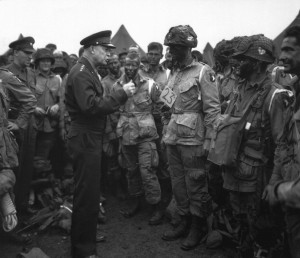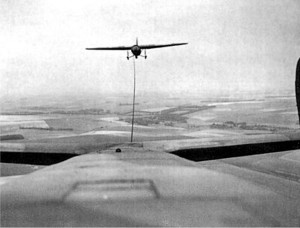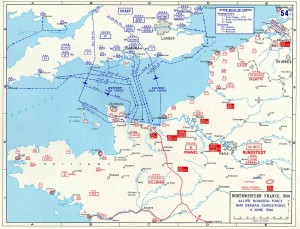
Published on June 6, 2012
In the late hours of the night of June 5/6, 1944, the largest airborne armada ever assembled was formed up over England to support the invasion of France — it was D-Day and this was Operation Neptune. Squadron after squadron of C-46s and C-47s and other aircraft took off from airfields across southern England. Some were loaded with paratroopers, other aircraft towed gliders.
The squadrons climbed into the night sky and formed up into huge circling formations. The logistics of the operation were extraordinary. The airspace over England was divided into boxes and the squadrons eventually shepherded into a single column for the crossing of the English Channel. Timing was everything. It all had to happen with perfection. Despite a few problems, the overall the operation went well.
The central core of the final formation was 200 miles long and nine planes wide. Numerous routes were plotted on the planning chart. The operation involved allied forces from all nations, but predominantly American and British aircraft. On schedule, the massive column set out for the coast of France, not toward Calais, as the Germans expected, but to Normandy.
The invasion of Europe was on.

As the formation crossed the French coast, the German Luftwaffe’s anti-aircraft units opened fire. The gauntlet of fire had just begun — just minutes remained until the aircraft reached their drop zones a few miles inland. Many planes were hit and could be seen on fire spinning down from the formation. Flashes from the anti-aircraft fire filled the night sky. German radar had their altitude precisely pinpointed — and what was worse was that the aircraft flew low, making them easy targets.
Many aircraft were scattered and lost their position in the confusion that followed. The darkened land below revealed few landmarks to be seen. Many could not locate the carefully planned drop zones as wave after wave of paratroopers jumped from planes into the night. Likewise, the gliders detached and began to orbit down to the blacked-out fields below — most had no way of knowing that their drop points had been purposefully flooded by the Germans so as to cause mass casualties on landing. Many of the best landing sites had been mined.
The paratroopers were told in the briefings before the jump that if they looked to their left and right, one of those two men wouldn’t survive to see the morning. They had all volunteered and were an elite force. It showed — despite the extraordinary casualties they were likely to take, they did not waver in their mission.
The drops took more than an hour to complete given the length of the column of aircraft. Despite the chaos of the night, despite the intensive defenses, despite the losses, the airdrop into Normandy on D-Day remains to this day, the largest and most successful paratroop assault in the history of warfare.
In all, 11,000 aircraft were involved in the invasion — though not all in the paratrooper operations. Many flew attack missions, bombing, air defense and deception missions.
As General Eisenhower told the troops:
You are about to embark upon the Great Crusade, toward which we have striven these many months. The eyes of the world are upon you.
Indeed, it was a great crusade, perhaps the greatest in history, upon which the future of the world as we know it today was hanging in the balance.

